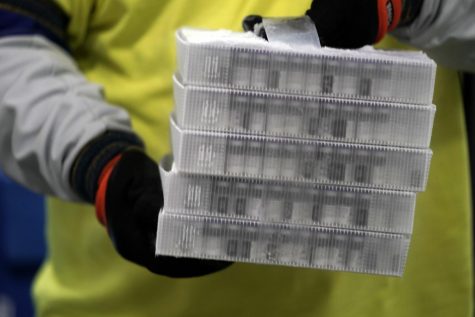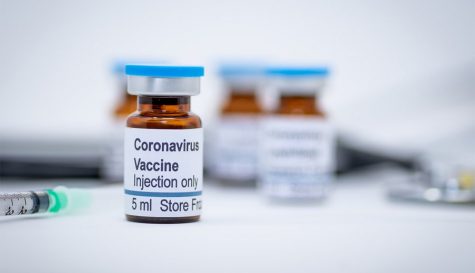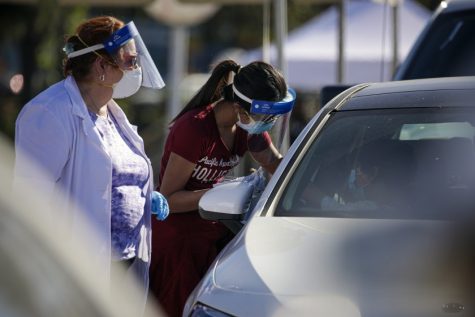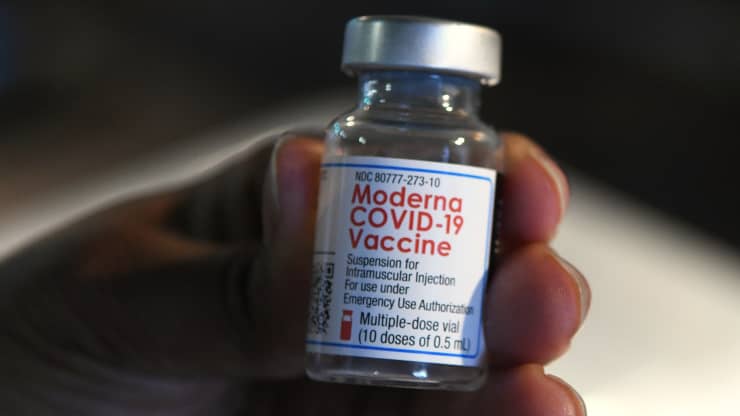Paul Hennessy/NurPhoto/Getty Images
A vial of the Moderna COVID-19 vaccine (Courtesy of CNBC).
The Race to a Vaccine: Distribution Confusion
January 28, 2021
During the last few months, there has been a growing sense of hope for the end of the pandemic. Many vaccines have recently been approved and vaccination efforts are beginning in many countries. While a return to normal life is in sight, many people are left wondering when they will get the vaccine, if they will be able to get a second dose, or if they will be able to get a vaccine at all.

Vaccine rollout has been slow and unorganized, especially in the U.S. There are currently two vaccines that have been approved in the United States: the Pfizer-BioNTech vaccine and the Moderna vaccine. These vaccines are both more than 90% effective. Johnson & Johnson’s coronavirus vaccine, which is still in its Phase 3 trial, is expected to help the vaccination effort in the United States if and when it is approved, especially because it requires only one dose, rather than the two doses required by the Pfizer-BioNTech and Modera vaccines. A vaccine by Oxford and AstraZeneca has been approved by the United Kingdom, India, Argentina, Mexico, Brazil, and Pakistan. It is currently undergoing a second Phase 3 trial in the United States, after the first trial was restarted after it was reported that a trial volunteer in Brazil died from COVID-19. Other vaccines, such as the multiple Russian and Chinese vaccines and the single Indian vaccine have been approved in their respective countries, as well as a few others. However, experts have been skeptic of these vaccination programs for not releasing Phase 3 trial data before vaccine rollout began, warning that this rushed process could potentially pose significant risks.
Part of the reason for slow rollout of the vaccine is that the Trump administration had no vaccination plan, according to CNN. Vaccine distribution has been heavily controlled by individual states, because of the lack of federal oversight. The new Biden administration is planning to create a new vaccination plan, which is expected to speed up distribution.

Vaccination in the U.S. was first prioritized for healthcare workers. In some states, including California, many elderly (65+ in California) have been able to get vaccinated. In California, the next group of people prioritized for the vaccine are essential workers. This plan will look similar in many other states as well.

A notable amount of people who received the first dose of the vaccine have not been able to get a second dose as a result of the slow rollout. Since the first dose does not offer the full protection of the vaccine, experts recommend getting a second dose as close to the 21 to 28 day period that is prescribed. However, many people are not able to receive it because of vaccination delays, which may lead to long-term issues in herd immunity.
While the vaccination effort has been inefficient and slow, vaccination is key to defeating the virus. With the Biden administration’s plan to speed up the rollout, a better organized system is expected to be put in place, which will help the country move forward to reach herd immunity.
Update (1/30): The Biden administration has created their new vaccination plan. To learn more about the plan, click here.
Resources:
- To see information on vaccine rollout in the United States, visit TIME’s COVID-19 Vaccine Tracker.
- To see information on California’s Vaccine Rollout Plan, visit the state’s page on vaccines on their COVID-19 website.
- To see information on vaccine rollout in Orange County, California, visit this page on Orange County Vaccine Distribution.
Sources:
https://www.nytimes.com/interactive/2020/science/coronavirus-vaccine-tracker.html
https://www.cnn.com/2021/01/21/politics/biden-covid-vaccination-trump/index.html
https://covid19.ca.gov/vaccines/#California-vaccines-dashboard
